Anmerkung: um die deutsche Version anzusehen, scrollen Sie bitte weiter nach unten.
The 5-star community
By Max Pohlenz / translated to English by mariposa
![]()
‚Rating’ is an ugly word. It almost sounds as though it describes the activity of one of the most hated, unloved, pestilential creature on this planet: the rat. Ever since 2008, the year of the financial crisis, the word has been on everyone’s lips and ears.
The keyword analysis site ‚Google Trends’ rates the search term ‚rating’ as following: the Search Volume Index decreased rapidly since 2004 from almost 1.50 to approximately 0.80, whereas the News Reference Volume continuously increased since the beginning of 2007, only to reach its short-lived climax on August 8 last year, when rumor had it that the USA was having difficulties in regaining the AAA rating level. To put it in a nutshell: the term ‚rating’ was less and less searched by google users, it turned out to be one of the most hated and unpopular words; and yet it had become irreversibly established in the news.
The rating system of toonpool.com was also hated, but indispensable for an online community like this. And while other portals equipped their users with new possibilities to participate in community life or adapted their rating system, time seemed to hang suspended in this department on toonpool.com – and time flies by dangerously fast on the internet. YouTube simplified its rating options by replacing the five star scale with ‚like’ and ‚dislike’ buttons, the nerdy artist community deviant-art seem to be free of any form of rating because of the invisible brotherhood band around its users, and many facebook users have started a cult in their blue and white cyber world by using the world-famous four-letter word: ‚Like’. Thumbs-up stickers posted all over the walls and doors of metropolitan IN-districts.
What is remarkable is that many facebook users have expressed their longing for a ‚dislike’ button. The most simple rating system is still too unperfect for some users. The biggest dislike group on facebook already has more than three million members, a number coming close to the population of Berlin. No matter what you call it – dislike, diss, bully, downgrade – giving negative ratings can release happiness hormones just like bitching and gossiping does. Since the beginning of my web existence in 1996, I witnessed the Seven Sins going online. All the evil comments and downgrades on the internet are revelations of Ira, the wrath and Invidia, the envy – all of this happening under the cloak of anonymity and by creating multiple identities or accounts, as though the internet and toonpool.com were teeming with schizophrenic stalkers diagnosed with bipolar disorder, who nowadays don’t seek attention by hooting and tailgating during evening rush hour, but arm themselves with mouse and keyboard. Web anonymity and rating agency – never before were these two subjects more present than in the last three years until today.
toonpool.com’s users have (as befits a community of artists) a much more creative approach to this topic. The toonpool forum lists eight threads about rating. As early as March 2008 – toonpool.com wasn’t even 6 months old – a (former) user suggested changes and another one vented his displeasure. Suggestions ranked from mathematic to sociological concerns and even included an expression of outrage, an ‚international scandal in the world of cartoons’, which was aimed at a cartoon competition in cooperation with stern.de. On stern.de, visitors were asked to vote for cartoons of Angela Merkel and Frank-Walter Steinmeier and owing to technical difficulties, the rating system seemed to have a manipulative property/character/touch.
In general, the cartoonist is a special type of the main category of artists: often sensitive, vulnerable, susceptible to criticism, and yet, unlike other creative beings, the cartoonist has the most powerful and dangerous instrument to fight back: the cartoon. The collection ‚the mysterious one-star-rater’ consists of a treasure of beautiful artworks about the mysterious legendary character peculiar to toonpool – the universally hated ‚one-star-rater’. At times he/it sits, as depicted by Dirk Berrens, in his quiet chamber like the phantom of the Opera in front of his gigantic screen, performing his evil doings
at times he kicks one and receives many stars due to the pain
or he kneels in front of a star-pooping donkey which is laughing at him (as pictured by Pascal Kirchmair).
These works express the general spirit of toonpool.com: it’s a wonderful and creative community, at times stubborn, at times odd and strange, but always artistic and genuine. One subject will suffice, whether it be annoying or pleasant, local, global, analog or dialog: and voilá, there will be a response in the form of a cartoon.
 Now the rating system is a relic of the past, instead we introduce a plain and simple heart. The new icon/symbol is an ancient/old message to the world. Make Love, not Stars. Or something along these lines. The Internet has become the most important rating instrument, you can give everything and everyone a grade: my house, my car, my wife. The victory of the Internet is also a victory of statistics, charts and databases. A little less of it will do us good, let’s hand out hearts instead.
Now the rating system is a relic of the past, instead we introduce a plain and simple heart. The new icon/symbol is an ancient/old message to the world. Make Love, not Stars. Or something along these lines. The Internet has become the most important rating instrument, you can give everything and everyone a grade: my house, my car, my wife. The victory of the Internet is also a victory of statistics, charts and databases. A little less of it will do us good, let’s hand out hearts instead.
Maybe the painting ‚The Scream’ by Edvard Munch is worth 120.000.000 $. The German translation for rating (‚Bewertung’) contains the word ‚value’ (‚wert’), so rating must involve a number – whether it be US dollars or toon-stars. Maybe the Norwegian masterpiece would have received one single star on toonpool.com. What is certain though is, that there won’t appear any cloaked people at an exhibition who stick yellow and white stars below the artist’s artworks. On the other hand there’s always plenty of applause at gallery openings – hence the applause button.
Epilog
During my communication design studies, I received a rating for one of my magazine layouts that initially shocked me, yet I learned to appreciate the view of the teacher: ‚That sucks.’ But communication design is no art either.
—————————————————————————————————————————————
Deutsche Version (German version)
Die 5-Sterne-Community
Von Max Pohlenz
![]()
“Rating” ist ein häßliches Wort. Fast klingt es, als beschreibe es die Tätigkeit eines der verhaßtesten, ungeliebtesten, pestbringenden Wesen auf dieser Erde: der Ratte. Spätestens seit 2008, dem Jahr der Finanzkrise, ist das Wort in aller Munde und Ohren.
Die Keyword-Analyseseite “Google Trends” bewertet, also “rated” den Suchbegriff “rating” wie folgt: der Search Volume Index sank seit 2004 rapide von fast 1,50 auf ungefähr 0,80, während die News Reference Volume seit Anfang 2007 stetig anstieg und einen kurzen Gipfel am 8. August letzten Jahres erfuhr, als bekannt wurde, daß die USA Schwierigkeiten damit haben, ihr Rating AAA wiederzuerlangen. Bedeutet: der Begriff “rating” wurde seltener von google-Usern gesucht, er wurde immer verhaßter und unbeliebter; gleichzeitig war er jedoch nicht mehr aus den Nachrichten wegzudenken.
Auch das Rating-System von toonpool.com war verhaßt, aber bei einer Online-Community nicht wegzudenken. Doch während andere Portale ihren Benutzern neue Möglichkeiten zur Beteiligung am Community-Leben zur Verfügung stellten oder ihr Rating-System anpaßten, blieb die Zeit bei toonpool.com in dieser Hinsicht ein bißchen stehen – und die Zeit im Internet dreht sich gefährlich schnell. YouTube vereinfachte die Bewertung von fünf Sternen auf ein großes “Mag ich” und ein kleines “Mag ich nicht”, in der nerdigen Künstlergemeinde deviant-art untersagt eine Art unsichtbares Bruderschaftsband die böse Abwertung, und viele facebook-User haben die vier weltberühmten Buchstaben zur Bewertung innerhalb ihrer blau-weißen Online-Welt zum Kult erklärt: “Like”. Längst kleben in allen Szenevierteln der Metropolen an Wänden und Türen selbsterstellte erhobene Daumen aus Papier.
Dabei werden immer wieder Stimmen aus den facebook-Untiefen laut, die nach dem “Dislike”-Knopf rufen. Das simpelste Bewertungssystem ist noch zu unperfekt für den einen oder anderen Benutzer. Die größte Dislike-Gruppe auf facebook zählt immerhin über drei Millionen Mitglieder. Wie man es auch nennt – disliken, dissen, mobben, downraten – das negative Bewerten kann wie das Lästern Glückshormone freisetzen. Seit dem Beginn meines Online-Seins 1996 sah ich neben allen großen Veränderungen auch dem Online-Gehen der Sieben Todsünden zu. In allen bösen Kommentaren und Downratings im Web zeigen uns Ira, der Zorn, und Invidia, der Neid, ihre Gesichter – dies alles unter dem Deckmantel der Namenlosigkeit und unter Zuhilfenahme von multiplen Identitäten und Accounts, als ob das Internet und auch toonpool.com nur so wimmle von schizophrenen Stalkern mit bipolaren Störungen, die sich heutzutage nicht mehr hupend und dicht auffahrend im Feierabendverkehr aufmerksam machen, sondern sich mit Mouse und Tastatur bewaffnen. Auf der anderen Seite kämpft die sehr erfolgreiche, erst sechs Jahre alte Piratenpartei in Deutschland um die Anonymität im Web – zurecht, denn trotz der Shitstorms auf etablierte Politiker, trotz Stalkern und Mobbing-Angriffen brauchen die Minderheiten ein Sprachrohr, eine Plattform, in der sie sich namenlos austauschen können, so wie es seit Beginn des modernen Internets möglich ist. Netz-Anonymität und Rating-Agentur – noch nie waren diese zwei Themen aktueller als in den letzten drei Jahren bis jetzt.
Die toonpool.com-Benutzer gehen, wie es sich für eine Künstler-Community gehört, oftmals deutlich kreativer mit dem Sachverhalt um. Im toonpool-Forum dreht sich in acht Threads alles um das Rating, schon im März 2008 – toonpool.com war nicht einmal ein halbes Jahr alt – schlug ein ehemaliger User Änderungen vor und ein anderer drückte seinen Unmut aus. Die Vorschläge waren manchmal mathematischer, manchmal soziologischer Natur und reichten bis zum Ausruf eines “Internationalen Skandals in der Cartoonwelt“, wobei letzeres sich auf einen Cartoonwettbewerb auf stern.de in Kooperation mit toonpool.com bezog. Besucher konnten dort für Cartoons über Angela Merkel und Frank-Walter Steinmeier stimmen, aufgrund technischer Pannen erhielt das Bewertungssystem einen manipulativen Charakter.
Der Cartoonist im gemeinen ist eine besondere Gattung der Oberkategorie Künstler: oftmals sensibel, verletzlich, leicht durch Kritik beeinflussbar, kann er jedoch im Gegensatz zu den übrigen schaffenden Kreaturen mit seiner gefährlichsten Waffe zurückschlagen: dem Cartoon. Die Collection “the mysterious one-star-rater“ birgt ein Dutzend wunderbarer Kunstwerke, die sich mit der mysteriösen, toonpool-eigenen Sagenfigur befassen, dem allseits verhaßten “One-Star-Rater”. Mal sitzt er, wie von Dirk Berrens dargestellt, dem Phantom der Oper gleich im stillen Kämmerlein vor dem Riesen-Screen und führt sein schmutziges Werk aus, mal tritt er gegen den einen und erhält vor Schmerzen viele Sterne oder kniet wie bei Pascal Kirchmair vor einem sternekackenden Esel, der ihn auslacht.
- In diesen Werken zeigt sich im kleinen, was toonpool.com im Großen ist: eine wunderbare kreativ-bunte Gemeinschaft, manchmal trotzig, manchmal kauzig und eigen, immer aber kunsthaft und ehrlich. Ein Thema reicht, egal ob ärgerlich oder erfreulich, ob lokal, global, analog oder dialog: schon gibt es eine Antwort in Bildform.
tl;dr
Nun ist das Rating-System Vergangenheit, an seiner Stelle prangt ein schlichtes Herz. Das neue Symbol ist eine alte Nachricht an die Welt. Make Love, not Stars. Oder so ähnlich.
Das Web selbst ist das größte Bewertungsinstrument geworden, man kann für alles und jeden eine Note erteilen: mein Haus, mein Auto, meine Frau. Der Sieg des Internets ist auch ein Sieg der Statistik, der Tabellen und Datenbanken. Ein bißchen weniger davon tut gut, verteilen wir stattdessen Herzen.
Vielleicht ist das Gemälde “Der Schrei” von Edvard Munch 120.000.000 $ wert. Die deutsche Entsprechung für Rating, “Bewertung”, enthält das Wort “wert”, Bewertung muß also zwangsläufig über eine Ziffer erfolgen – egal, ob die Einheit US-Dollar oder toon-Sterne heißt. Auf toonpool.com hätte das norwegische Meisterwerk vielleicht einen Stern erhalten. Mit Gewißheit kann man jedoch sagen, daß auf der Vernissage eines Künstlers keine vermummten Gestalten auftauchen, die gelbe und weiße Sterne unter seine Arbeiten kleben. Applaus gibt es allerdings oft auf Galerieeröffnungen – daher der Applause Button.
Epilog
Während meiner Ausbildung zum Kommunikationsdesigner erfuhr ich für einen meiner Magazin-Entwürfe eine Bewertung von meinem Dozenten, die mich zunächst schockierte, für die ich später aber dankbar war: “Das ist Scheiße”. Aber Kommunikationsdesign ist auch keine Kunst.
Image used for the preview by Medi Belortaja
© toonpool.comTags: cartoons, communtiy, one star rater, rating, rating system, toonpool.com
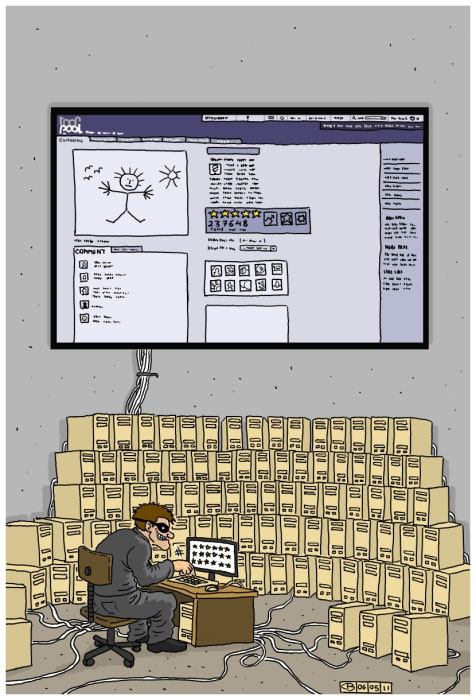
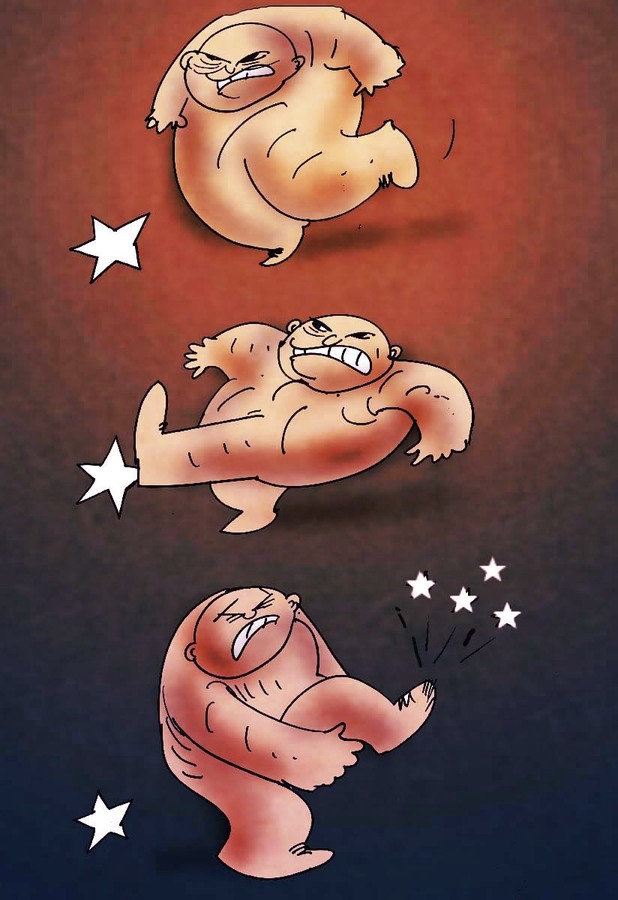
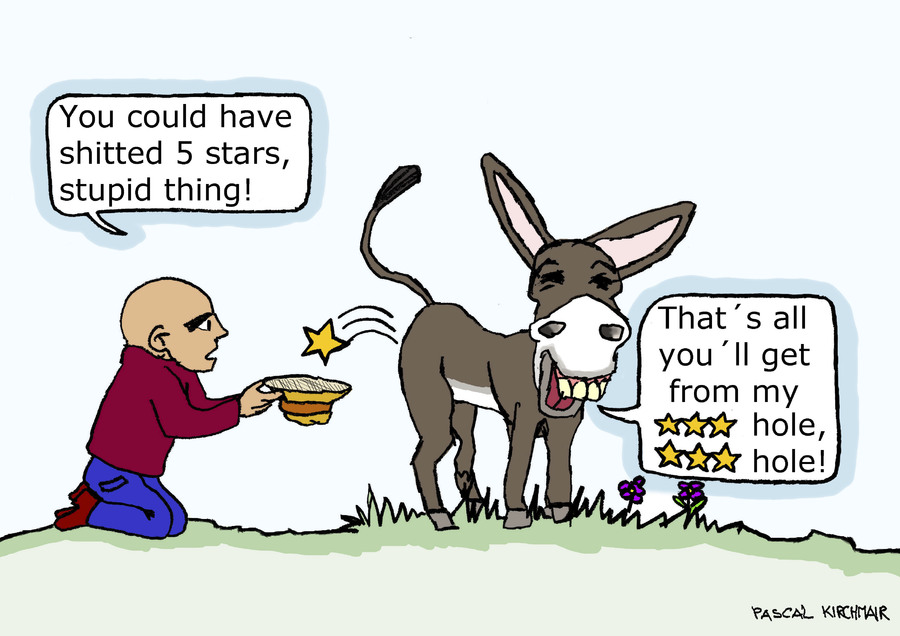
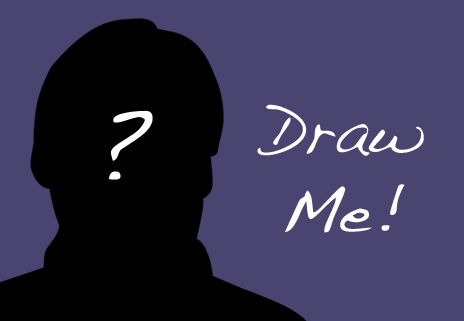
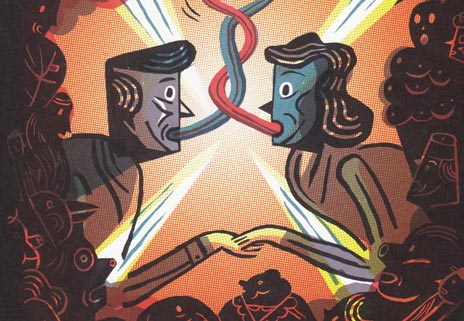
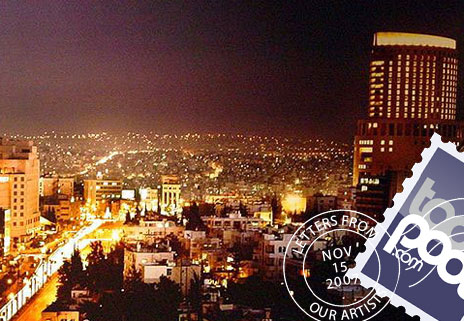
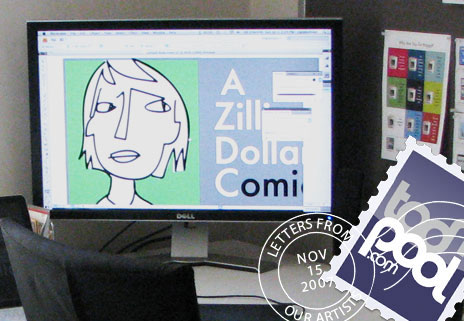
A standing ovation for the new applause meter! Thanks Max and everyone at toonpool!
This is all the same, but why should it be a problem to say (truthfully and strait) YES or No, like or don`t like ???
To me,it is no problem, different people different meanings and views.
Only no rassism, crime and nazis.
Was für ein Unsinn. Raten ist ok. Aber mit nur fünf Sternen macht es einfach keinen Sinn. Da ist alles 3. Zumal das Rating von Kollegen nicht so aussagekräftig ist, wie das der Endnutzer. Und Ratende Enduser gibt es hier wohl kaum.
Glückwunsch an jene “Buhuhu, wie könnt Ihr so gemein sein, mir für mein superduftes, vollfettes, genial-stylisches Meisterwerk nur einen Stern zu geben, Ihr seid alle doof, und wenn Ihr meine Freunde wärt…”-Künstler, die sich jetzt erfolgreich auch bei Toonpool ein System erjammert haben, in dem es nur noch Kuschelpunkte gibt. Und damit auch keiner weinen muss, für jeden dieselbe Menge. Ach nein, halt, jeder darf zwar nur die gleiche Menge Bussi-Bussi-Herzchen verteilen, aber das heißt ja noch nicht, dass jeder die gleiche Menge bekommt. Hey, Toonpool, da besteht auch dringender Modernisierungsbedarf: Jeder kriegt von vornherein hundert Herzchen für seine Zeichnung. Und damit gut. Dann braucht niemand mehr zu weinen und die Welt wird ein wunderbarer Ort voller Diversität unter einem Regenbogen. Mit Einhörnern.
Auf den Straßen geht es immer mehr aggro zu, das Bildungssystem wird vom Kindergarten bis zur Promotion auf Druck, Auslese, Stress umgebaut, aber mancherorts siegt die Kuschelpädagogik der siebziger Jahre. Oder genauer: eine Karikatur ihrer.
Wozu da noch Differenzierungsmöglichkeiten bei der Bewertung, wenn man etwa zum Ausdruck bringen möchte, dass einem zwar Stil, Aufbau, Ausführung eines Cartoons gefallen, einem aber dessen Aussage als fragwürdig erscheint? Grautöne sind was für böse Menschen, gute sehen die Welt aufgeteilt in Schwarz und Weiß.
Und sicher werden jene Zeitgenossen, die bislang eine halbe Stunde nach der Veröffentlichung eines ihrer Cartoons schon herumgejammert haben, wenn ihnen jemand einen einzigen Stern verpasst hatte, nicht ab sofort in einem neuerlichen Posting mit anspruchsvollem Screenshot “So unfair…” heulen, wenn sie nach zwei Stunden immer noch kein Herzchen haben sollten.
I find the whole thing very sad as you can’t award something that is good.
Getting A STAR is like winning a race at the Olympics it shows after all the years of studying and trial and era you have reached a higher performance.
Its a shame that those people who never get a STAR want to spoil it for the rest.
Just imagine winning a race at the OLYMPICS and not getting a medal – there would be no point for the winners to try.
I liked the Stars – If I didn’t get any stars I knew my work wasn’t very good so I took those cartoons off and put better ones on until people like them.
Thank you all for your honest comments.
First of all, we know that we can’t satisfy all users. And the ones who are satisfied with the new method won’t tell us here. There where 3 main reasons why we changed the method to rate artworks.
1. The 5-star rating was easy to manipulate. The Applause system can still be abused, but it is less effective now. It was hard for an artwork to get away from 5 1-star ratings of one user with multiple accounts, and there are a lot of “one-star-raters” around toonpool.com.
2. Art might be rateable, but I don’t see a connection to olympic medals. Sometimes a beautiful artwork was downrated because of the message in it or the country the artist is coming from, and the artist didn’t know why it was downrated. No doubt, it is helpful for customers who look for 5-star vacuum cleaners, but there is no good or bad art. Mike Baird seems to have seen a helpful tool in the 5-star rating, helping him to determine good artworks among his collection, but hundreds of e-mail complaints of other artists within the last years prove otherwise.
3. As derzeichner explains, the rating of most of the artworks on toonpool.com used to level at the average between 2.50 and 3.50. It was interesting for the first 7 days of an uploaded artwork to see the movement of rating, but afterwards it reached the mediocre. With the Applause method, artworks can still raise when uploaded 2 years ago.
I don’t think the Applause method is perfect, but it should help out the next time. There were a lot of good ideas for a new rating method in the forum, and they mostly asked for transparency; that all raters should be “visible” to the community. That there should be some way to express the opinion, not reduced to five simple stars.
Well, that’s always been possible. By writing comments.
All the best to you,
~Max
The applause system might not be perfect, but it’s a system conceived entirely in good faith. Nobody can deny it. At least it keeps malicious people away from high-quality works.
PS: Maybe the top rated section also should be removed. It seems that it doesn’t work correctly anymore.
A nice, quick English phrase…’So what!’. No one seems to be too sad at the 5 star passing on its way to oblivion.